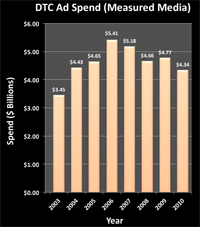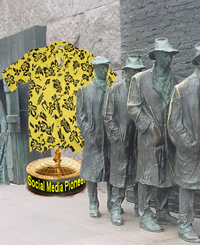Vol. 10, Issue No. 16: 27 OCTOBER 2011 – EXECUTIVE SUMMARY
Everything You Need to Know About Mobile Platforms And How to Avoid the Healthcare “ScrApp” Heap

If you’re thinking of developing a mobile application (app) for patients or physicians, you need to consider the myriad platforms — hardware plus software combinations — that are out there and determine which platform is best suited for your intended audience. Your choice of platform will impact your app’s performance, maintenance, and security, which in turn will make or break the success of the app.
Topic headings include:
- Mobile Trends in Healthcare
- Primary objectives of heathcare mobile apps
- Mobile platforms preferred by pharma
- Size Matters
- What’s Missing?
- Know the Platform Favored by Your Intended Audience
- Native vs. Web-based Apps
- Deployment & Regulatory Issues
- Global Rollout Considerations
- Patient Privacy Consideration
- Metrics and Measurement
- The User Experience
- Circumstances When the Choice is Obvious
Read this article now. It’s FREE…
How to Score With Women (as a Marketer) via Social Media 



 A conversation with Casey Quinlan, “Mighty Mouth” at Mighty Casey Media LLC, Zoe Dunn, Principal, Hale Advisors, Eileen O’Brien, Director, Search & Innovation, Siren Interactive, Richard Meyer, Principal Consultant, Online Strategic Solutions, Jerry Hall, Digital Media Executive, Advisor to Pearescope, about engaging and marketing to women online, especially via social media, which some new media marketers claim is “all about women.”
A conversation with Casey Quinlan, “Mighty Mouth” at Mighty Casey Media LLC, Zoe Dunn, Principal, Hale Advisors, Eileen O’Brien, Director, Search & Innovation, Siren Interactive, Richard Meyer, Principal Consultant, Online Strategic Solutions, Jerry Hall, Digital Media Executive, Advisor to Pearescope, about engaging and marketing to women online, especially via social media, which some new media marketers claim is “all about women.”
According to a Pew Research Center Internet & American Life Project survey, “Young adult women ages 18-29 are the power users of social networking; fully 89% of those who are online use the sites overall and 69% do so on an average day. Looking more closely at gender differences, women have been significantly more likely to use social networking sites than men since 2009.”
Some Questions/Topics To Be Discussed:
- Who said “social media is all about women” and what does this mean for the pharmaceutical industry?
- What does it take to be an effective social media partner when comunicating with women?
- Let’s talk about “moms” and not “Sex in the City” conspicious consummer of high-end goods type of women. What is pharma doing to woo moms via social media?
- While it is possible to imagine women having relationships with certain consumer brands via social media, is it possible for them to have similar relationships with health and/or drug brands?
- Is it even possible for pharma brands to establish relationships with women via social because of regulatory restrictions on pharma branded marketing?
More information and audio podcast can be found here:
http://ec2-54-175-84-28.compute-1.amazonaws.com/pharma-mkting.com/news/pmn1016-article02.htm Double Dip in DTC Ad Spend!  Direct-to-Consumer (DTC) pharmaceutical advertising spending suffered a “double dip” recession between 2007 and 2010, according to data presented in the AdAge Insights Whitepaper “Pharmaceutical Marketing: Targeting Consumers & Connecting Online.”
Direct-to-Consumer (DTC) pharmaceutical advertising spending suffered a “double dip” recession between 2007 and 2010, according to data presented in the AdAge Insights Whitepaper “Pharmaceutical Marketing: Targeting Consumers & Connecting Online.”
Spending dipped 14% from a high of $5.4 billion in 2006 to $4.7 billion in 2008 and dipped again 9% in 2010 compared to 2009, which saw a modest 2.4% increase over 2008.
meanwhile, Internet display ad spending by top pharma advertisers decreased 33% in 2010 compared to 2009.
Get more details here:
http://ec2-54-175-84-28.compute-1.amazonaws.com/pharma-mkting.com/news/pmn1016-article03.htm Is There an Upward Career Path for Pharma Social Media Pioneers?  Are we witnessing an exodus of social media “pioneers” from pharma similar to the exodus of interactive pioneers back at the turn of the century? That last exodus presaged the infamous “dotcom” bust. Perhaps the current exodus presages a similar setback for the social media industry.
Are we witnessing an exodus of social media “pioneers” from pharma similar to the exodus of interactive pioneers back at the turn of the century? That last exodus presaged the infamous “dotcom” bust. Perhaps the current exodus presages a similar setback for the social media industry.
Or could it be that pioneers inside pharma are feeling “alienated” within their companies, which no longer need their “critical thinking”?
In any case, there now appears to be a glut of independent social media communications “agencies” out there as these people set up their own shops. Not all of them will be successful, unfortunately.
Learn who’s in and who’s out here:
http://ec2-54-175-84-28.compute-1.amazonaws.com/pharma-mkting.com/news/pmn1016-article04.htm Without Free Gifts from Pharma to Docs, Would Research be Useless?  In a recent blog post, PhRMA said “Without Promotion Research will be Useless.” To support its case, PhRMA cited “an interesting opinion editorial” in the latest edition of the Annals of Emergency Medicine — the medical journal of the American College of Emergency Physicians (ACEP). In the op-ed, entitled “Limiting Gifts, Harming Patients,” Emory University economist Paul Rubin, Ph.D. expressed concern that ACEP policy regarding Gifts to Emergency Physicians from Industry “could have the unfortunate effect of limiting the exchange of critical information between medicine makers and physicians about the benefits and risks of new medicines, how to use them properly and how best to diagnose the right candidates for particular treatments.”
In a recent blog post, PhRMA said “Without Promotion Research will be Useless.” To support its case, PhRMA cited “an interesting opinion editorial” in the latest edition of the Annals of Emergency Medicine — the medical journal of the American College of Emergency Physicians (ACEP). In the op-ed, entitled “Limiting Gifts, Harming Patients,” Emory University economist Paul Rubin, Ph.D. expressed concern that ACEP policy regarding Gifts to Emergency Physicians from Industry “could have the unfortunate effect of limiting the exchange of critical information between medicine makers and physicians about the benefits and risks of new medicines, how to use them properly and how best to diagnose the right candidates for particular treatments.”
What’s so onerous about the ACEP policy that an op-ed piece would attack it as “harmful to patients” and PhRMA would claim it renders research useless?
Read this article to find out:
http://ec2-54-175-84-28.compute-1.amazonaws.com/pharma-mkting.com/news/pmn1016-article05.htm Antidepressants: Top Advertised & 3rd Most Commonly Used Rx Drug  According to a recent CDC Data Brief, antidepressants were the third most common prescription drug taken by Americans of all ages in 2005–2008 and the most frequently used by persons aged 18–44 years. From 1988–1994 through 2005–2008, the rate of antidepressant use in the United States among all ages increased nearly 400%.
According to a recent CDC Data Brief, antidepressants were the third most common prescription drug taken by Americans of all ages in 2005–2008 and the most frequently used by persons aged 18–44 years. From 1988–1994 through 2005–2008, the rate of antidepressant use in the United States among all ages increased nearly 400%.
Perhaps not so coincidentally, antidepressants are among the TOP advertised Rx category in 2010, according to the recent AdAge analysis.
Read more and find the data here:
http://ec2-54-175-84-28.compute-1.amazonaws.com/pharma-mkting.com/news/pmn1016-article06.htm



![6 Digital Tools at the Center of Healthcare Digitalization [INFOGRAPHIC]](http://ec2-54-175-84-28.compute-1.amazonaws.com/pharma-mkting.com/wp-content/uploads/2021/04/6DigitalTools_600px-218x150.jpg)




![6 Digital Tools at the Center of Healthcare Digitalization [INFOGRAPHIC]](http://ec2-54-175-84-28.compute-1.amazonaws.com/pharma-mkting.com/wp-content/uploads/2021/04/6DigitalTools_600px-100x70.jpg)




